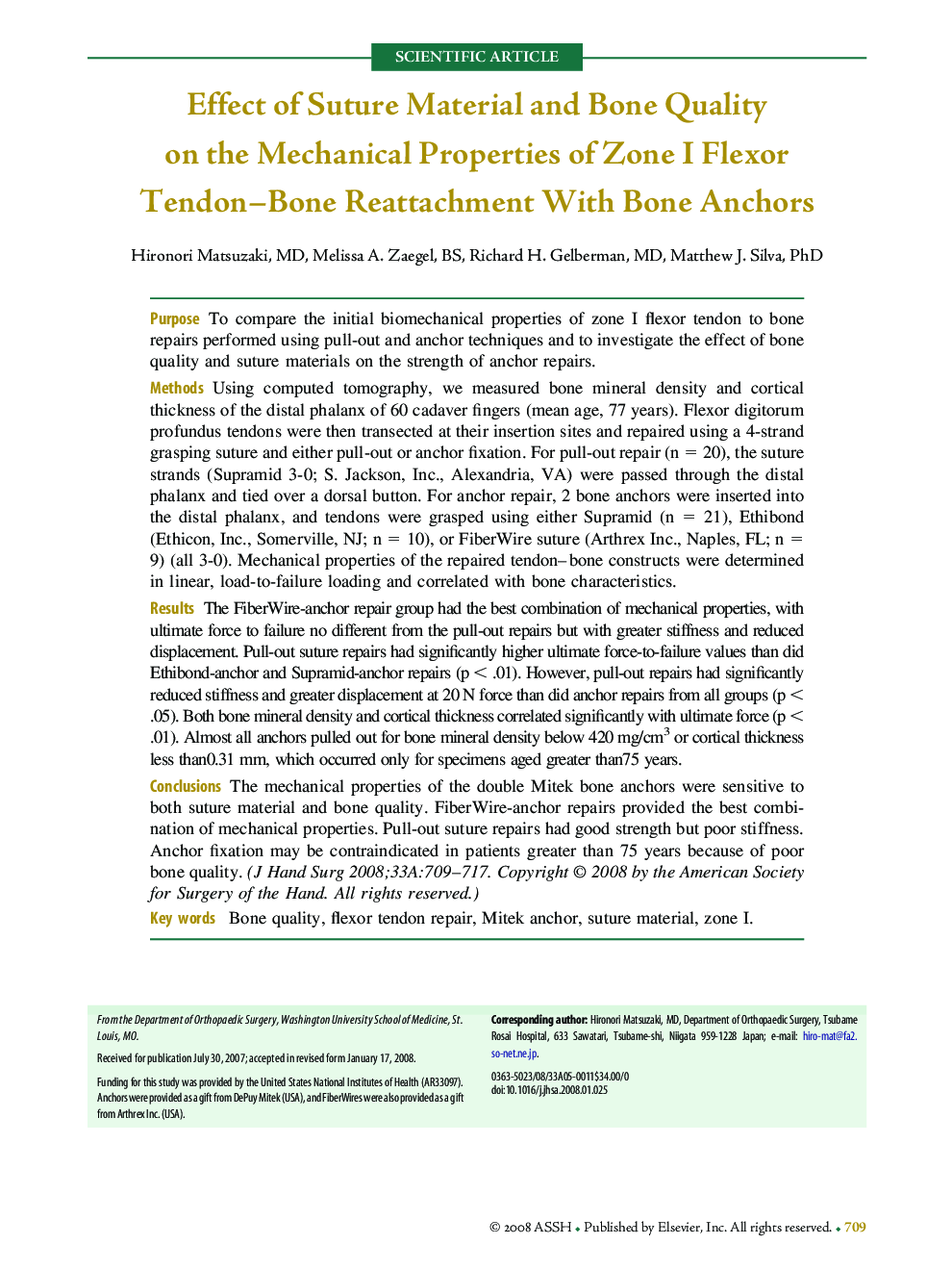| Article ID | Journal | Published Year | Pages | File Type |
|---|---|---|---|---|
| 4070796 | The Journal of Hand Surgery | 2008 | 9 Pages |
PurposeTo compare the initial biomechanical properties of zone I flexor tendon to bone repairs performed using pull-out and anchor techniques and to investigate the effect of bone quality and suture materials on the strength of anchor repairs.MethodsUsing computed tomography, we measured bone mineral density and cortical thickness of the distal phalanx of 60 cadaver fingers (mean age, 77 years). Flexor digitorum profundus tendons were then transected at their insertion sites and repaired using a 4-strand grasping suture and either pull-out or anchor fixation. For pull-out repair (n = 20), the suture strands (Supramid 3-0; S. Jackson, Inc., Alexandria, VA) were passed through the distal phalanx and tied over a dorsal button. For anchor repair, 2 bone anchors were inserted into the distal phalanx, and tendons were grasped using either Supramid (n = 21), Ethibond (Ethicon, Inc., Somerville, NJ; n = 10), or FiberWire suture (Arthrex Inc., Naples, FL; n = 9) (all 3-0). Mechanical properties of the repaired tendon–bone constructs were determined in linear, load-to-failure loading and correlated with bone characteristics.ResultsThe FiberWire-anchor repair group had the best combination of mechanical properties, with ultimate force to failure no different from the pull-out repairs but with greater stiffness and reduced displacement. Pull-out suture repairs had significantly higher ultimate force-to-failure values than did Ethibond-anchor and Supramid-anchor repairs (p < .01). However, pull-out repairs had significantly reduced stiffness and greater displacement at 20 N force than did anchor repairs from all groups (p < .05). Both bone mineral density and cortical thickness correlated significantly with ultimate force (p < .01). Almost all anchors pulled out for bone mineral density below 420 mg/cm3 or cortical thickness less than0.31 mm, which occurred only for specimens aged greater than75 years.ConclusionsThe mechanical properties of the double Mitek bone anchors were sensitive to both suture material and bone quality. FiberWire-anchor repairs provided the best combination of mechanical properties. Pull-out suture repairs had good strength but poor stiffness. Anchor fixation may be contraindicated in patients greater than 75 years because of poor bone quality.
